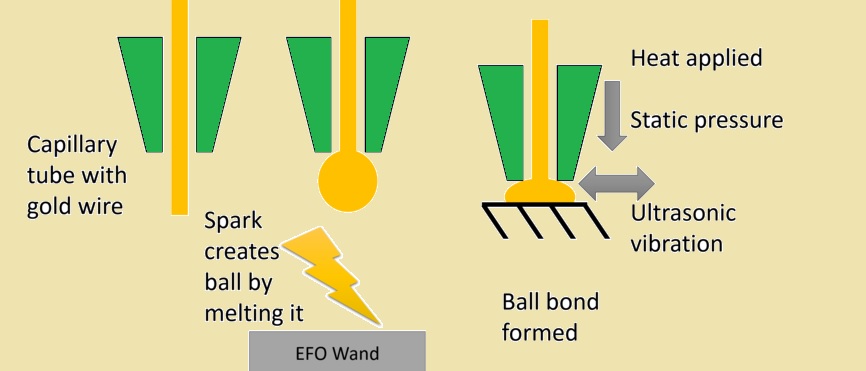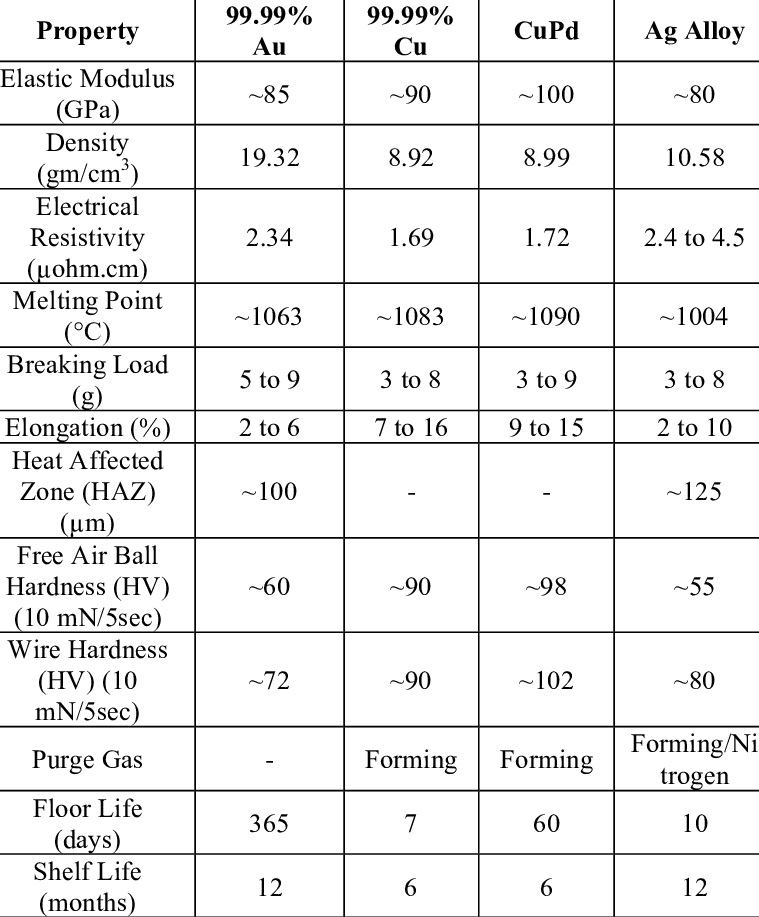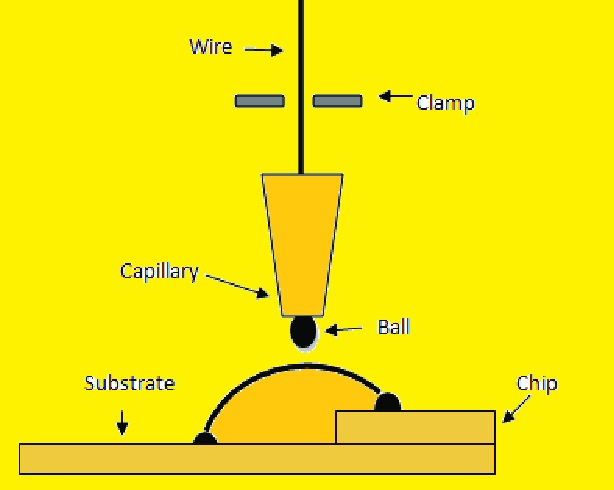Hello readers, welcome to the new post. Here, we will learn wire bonding Processes and advanced PCB design. Wire bonding is the main factor in developing electronics and PCB board design. In this post, we will discuss the details of wire bonding, its process, and its common uses in advanced PCB design. So let’s get started with What Wire Bonding.
Introduction
In the world of electronics, there small, fast, and effective devices are used. Here, details of wire bonding are covered.

Understanding Wire Bonding
The Basics of Wire Bonding
Wire bonding is a process that connects ICs to boards with thin wires of gold or aluminum. These connection techniques are good for semiconductor device assembly and make reliable connections.
What Are the Types of Wire Bonders?
It has two types: manual wire bonders and automated wire bonders.
- Manual wire bonders are used for low-volume production and prototyping. They are easy to work with and are used for bonding different wires and bond pads. But they are slow and need more labor work.
- Automated wire bonders are used for high-volume production. They are more complicated and high-cost than manual wire bonder techniques. They can bond wire fastly and consistently. Automated wire bonders are also employed for complex wire bonds such as ball and wedge bonds.
There are also two main types of wire bonding techniques:
- Thermocompression bonding uses heat and pressure to make the bond between wire and bond pad. it is a common wire bonding method used
- Ultrasonic bonding uses high-frequency vibrations for bonding between wire and bond pad. It is commonly used to bond wires with smaller diameters and tighter pitches.
Limitations of Wire Bond Machines
- In the automotive industry, wire bonders connect busbars of EV battery packs, cells, and modules. This technique causes bottlenecks and fills shop floors with different automatic wire bonders. That increases cost and floor space needs
Alternative technologies to wire bonding
- Laser welding: It is the latest technique to replace wire bonds. It is a high-speed and accurate process and is less sensitive to contamination. However, laser welding machines are more costly than wire bond machines.
- Flip-chip bonding: it is for bonding two chips with each other face to face.it is a complicated process than wire bonds can make more vigorous and reliable connections. This bonding is used for high-performance uses such as microprocessors and memory chips.
- Direct chip attach: This is a process of bonding the chip directly to the substrate. it is a new process and under development, it can used as a replacement for wire bonding in different uses. It is a more effective process than wire bonding and makes small, compact designs
Surface Cleaning Difficulties Before Wire Bonding: Plasma Cleaning or Laser Cleaning?
The 2 main surface cleaning techniques used before wire bonding are plasma and laser. Both techniques have their advantages and disadvantages.
Plasma cleaning employs high-energy plasma to reduce contamination from the surface. Plasma is made with the use of gases like oxygen and hydrogen. it reduces different materials like organic, inorganic, and particulate matter. Is a bad effect that can affect surface materials and make it difficult to control the depth of cleaning
Laser cleaning employs a high-power laser to apply material on the surface, reducing contamination with a small quantity of material. This technique is correct and can remove contaminants from small parts without affecting neighboring areas. But is disadvantage is that it is more costly than plasma cleaning and does not remove all contaminants.
The best surface cleaning technique for wire bonding will be based on a specific application. Plasma cleaning can be a good solution if the surface is heavily contaminated. If the surface is delicate, laser cleaning can be a good option
Advantages and disadvantages of plasma cleaning and laser cleaning for surface cleaning before wire bonding:
Materials used for wire bonding

Gold, aluminum, silver, and copper are the most commonly used materials for wire bonding.
- Gold is best for wire bonding because it has high electrical conductivity, corrosion resistance, and melting point. It is inert and does not react with other materials. It is used for ball bonding, which is wire bonding, and makes small metal balls at the wire end.
- Aluminum is low-cost and the best replacement for gold due to its good conductive nature. it is soft and ductile and used to bond-making. It is used for wedge bonding, which makes the wedge-shaped bond between wires and substrate.
- Silver is a good conductor, not corrosion-resistant like gold. Silver wire used for high electrical conductivity is needed, like in high-speed integrated circuits.
- Copper is a highly conductive metal, but it is also reactive. Copper wire is needed for high electrical conductivity, and the cost is a main factor.
How does wire bonding work
- Preparation: Before wire binding, semiconductor chips and packages are prepared. Chip is mounted in the substrate, and the box can have bonding leads.
- Wire Selection: Materials are gold, copper, and aluminum according to their features and need uses.
- Wire Feeding: A wire spool is loaded in the wire border machine. The machine correctly fed wire to the binding area.
- Bonding Tool: Wire bonder machines come with binding tools that are ultrasonic transducers or thermosonic bonding tools, based on the bonding method being used.
- Wire Placement: Bonding is accurately configured wie on the bonding pad, and pressure is provided to make the physical connection. The heat or ultrasonic energy helps the wire to place lead.
- Bonding Process: Now, the bonding tool uses the required energy to make the bond between the wire and the bonding pad. Heat and pressure are applied to define and fuse with a place or lead and make the solid conductive connection.
- Wire Tail Cutting: Extra wide bonding is cut using tools and an integrated wire binder. It makes sure the wire does not interface with other connections.
- Quality Control: For quality check bond strength, electrical continuity, and correct placement is made
- Repeat for Multiple Bonds: The wire bonder machine repeated this process for all the wire bonds on the semiconductor chip or among the chip and the package.
FAQS
-
What wire is used for wire bonding?
- This process uses binding a fine wire that is made of gold, aluminum, or copper,
-
What is wire bonding in PCB?
- Wire bonding is the process that connects fine wires with the components on board.
-
Why is gold used for wire bonding?
- Due to its good conductor nature, corrosion resistance, and inert behavior, it is used.
-
What is the temperature of wire bonding?
- The temperature of wire bonding can change based on the type of wire bonding process used, but it is normally in the range of 200 to 400 degrees Celsius.
-
What is the pressure for wire bonding?
- The pressure for wire bonding is normally in the range of 10-20 grams per square millimeter.
-
What is the average temperature of the wire?
- The average temperature of a wire is based on the material of the wire and the environment in which it is used. 300 to 500°C is used temperature
| Wire bonding | Operating Temperature | |
|---|---|---|
| Thermocompression | 300-500°C | |
| Ultrasonic | 25°C | |
| Thermosonic | 100-240°C |
-
What is the highest temperature wire?
- The highest temperature wire is tungsten, which can handle temperatures up to 3,422 degrees Celsius.
-
What is the maximum temperature for cable?
- For low-voltage cables, the maximum safe operating temperature is 85 degrees. The short circuit temperature rating is 250° C.
-
Why does temperature increase in a wire?
- The temperature of a wire increases when current passes through it. This is because the resistance of the wire transforms some of the electrical energy into heat.
-
What is the resistance of a wire?
- The resistance of a wire measures how much it restricts the flow of current. Lenght material and areas affect resistance.
-
How do you control the temperature of a wire?
- The temperature changes with the current flowing through it, the wire’s length, or the wire’s cross-sectional area.
-
What depends on the temperature of the wire?
- Resistance and conductivity are based on resistance. It also affects its mechanical features, such as strength and flexibility.


